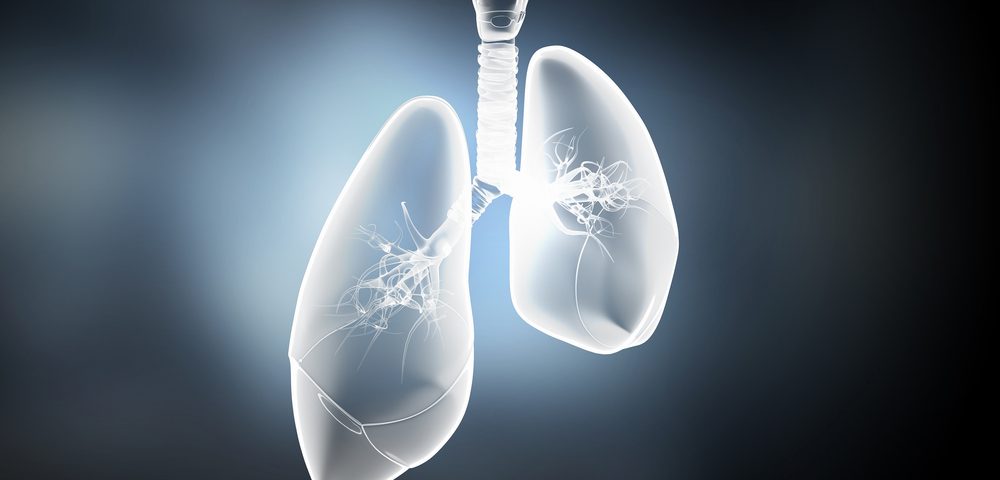Software May Predict IPF Progression Based on Chest Scans

A software program called CALIPER may be useful in predicting the progression of idiopathic pulmonary fibrosis (IPF) and the effectiveness of antifibrotic treatment based on lung images taken through high-resolution computed tomography (HRCT), researchers found.
The study, “Automated Computed Tomography analysis in the assessment of Idiopathic Pulmonary Fibrosis severity and progression,” was published in the European Journal of Radiology.
IPF is a chronic condition that causes progressive scarring of the lungs. Blood vessels in the lungs are also affected as the condition progresses, and their structure and function becomes altered.
Diagnostic tests for IPF often include the measurement of lung forced vital capacity (FVC) — the total amount of air a person can exhale forcefully — and a chest scan. FVC is considered a reliable predictor, but it may miss small changes, and the results can be vary depending on certain factors, making it difficult to evaluate the progression of IPF based on FVC.
HRCT is a type of chest scan that can be used to take images of the lung structure and allow radiologists to visualize signs of IPF. Until recently, there was no reliable way to quantify the changes in the images taken with HRCT over time and translate them into clinical disease stages.
CALIPER (Computer-Aided Lung Informatics for Pathology Evaluation and Ratings) was designed to automatically evaluate and quantify changes to the structure of the lungs based on images taken with HRCT.
The software can quantify lung abnormalities and represent them as percentage of interstitial lung disease (ILD%). It can also evaluate changes to lung blood vessels by scoring them as percentage of volume of pulmonary vascular related structures (PVRS%).
Researchers tested CALIPER as a tool to predict the decline of lung function and disease prognosis in people with IPF, taking into account ILD% and PVRS% measures.
They analyzed 61 patients with IPF who had undergone HRCT and FVC analysis at the time of diagnosis, and then repeated the FVC measurement one year later.
They divided the patients into two groups: those who had a decline of FVC greater than or equal to 10%, or “fast“decliners, and those with a FVC decline of less than 10%, dubbed “slow” decliners, over the one-year period.
They found a strong correlation between FVC and the CALIPER-derived features based on HRCT. Specifically, a baseline HRCT result of more than 20% ILD% and a PVRS% of more than 5% separated those who experienced a fast decline in FVC from slow decliners.
“The optimal cutoff value of ILD for distinguishing between patients with and those without a decline in FVC was 20%, while the optimal cutoff value for PVRS was 5%,” the researchers wrote.
These same 20% ILD% and 5% PVRS% thresholds were also seen to influence a person’s one-year and three-year survival prognosis. In particular, a PVRS% of 5% or higher was associated with a poor three-year prognosis.
The team tested the usefulness of CALIPER in evaluating disease progression in patients taking antifibrotic therapies. They used CALIPER to analyze sequential HRCT scans from 59 IPF patients, 34 of whom took antifibrotics and 25 who did not.
The monthly progression of ILD% was 0.067%, and of 0.005% in PVRS% in patients receiving antifibrotic therapies. These results were lower, suggesting a slower disease progression than in the patients not taking antifibrotics, who registered monthly 0.372% ILD% and 0.046 % PVRS%.
Taken together, the results suggest that “CALIPER quantification of fibrosis and vascular involvement could distinguish disease progression in treated versus untreated patients, and predict their survival,” the researchers wrote, adding that CALIPER may also be used “as a reproducible and objective endpoint in future clinical trials.”
The results obtained with CALIPER “are extremely important for disease monitoring, and may be clinically useful to determine whether a specific patient is responding to therapy or has failed treatment,” they said.







